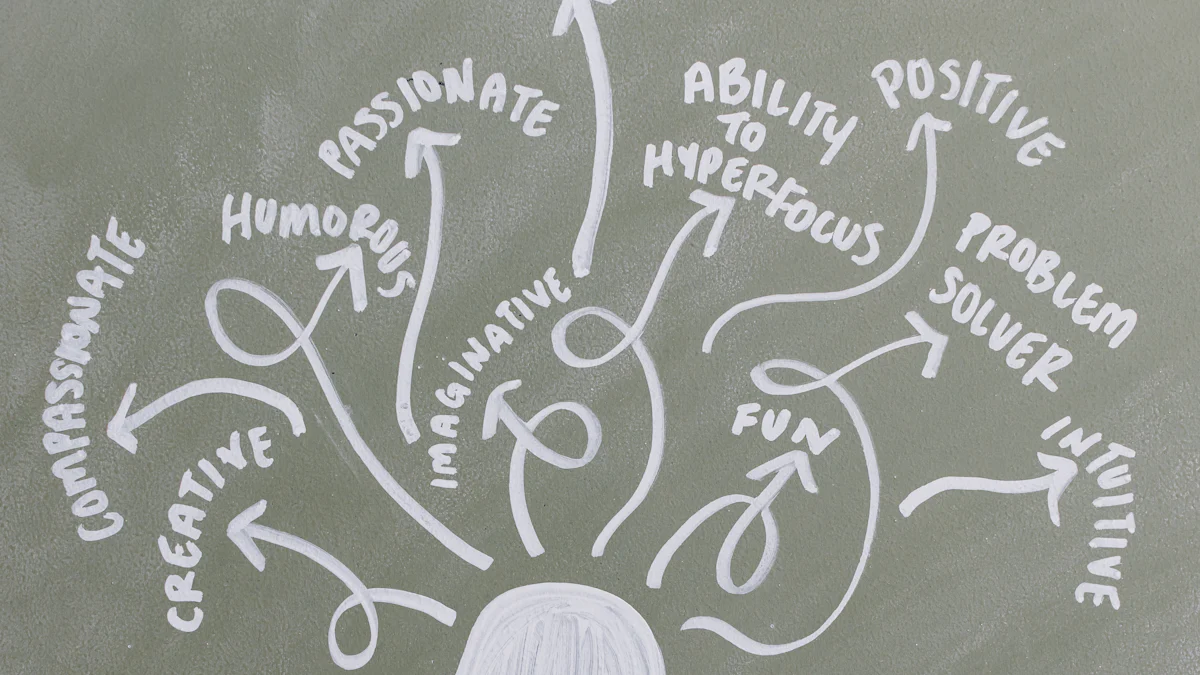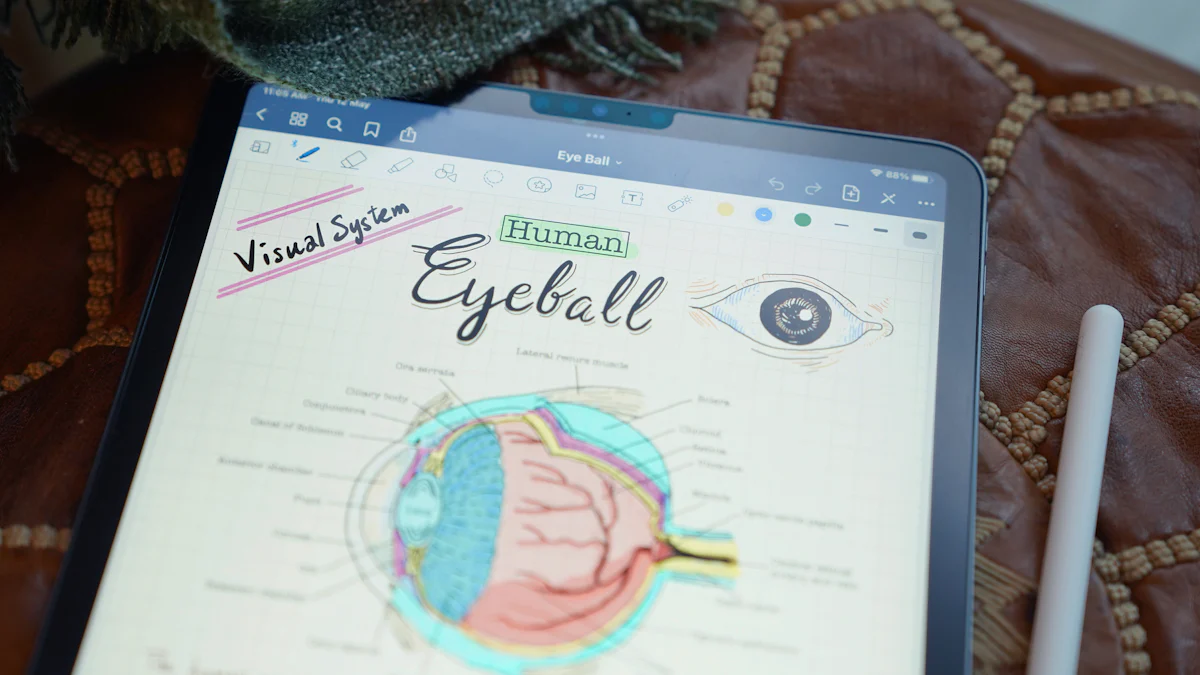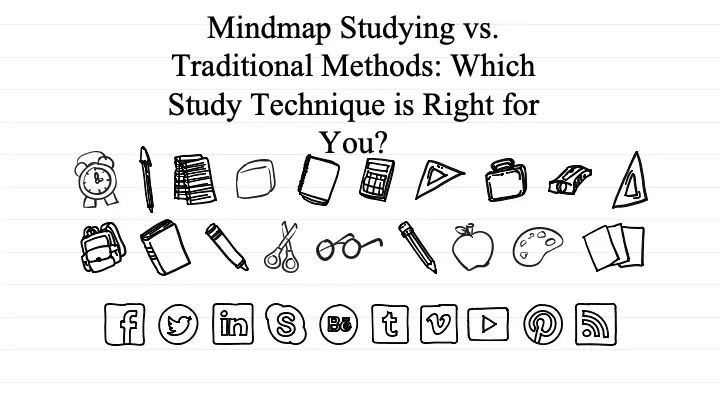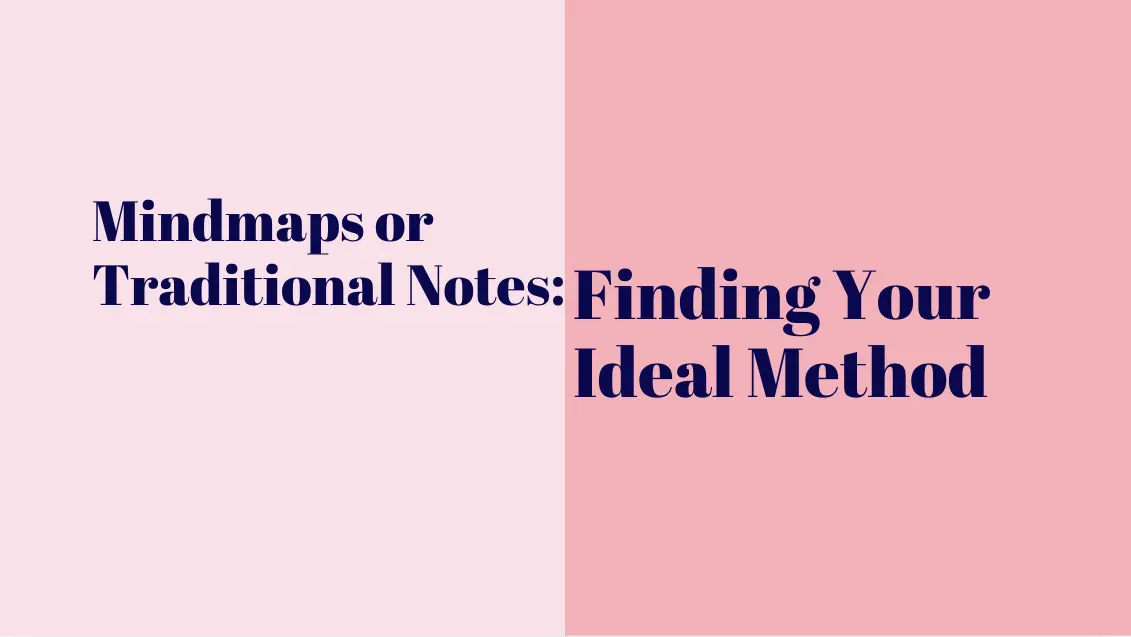
Image Source: unsplash
Effective note-taking plays a crucial role in enhancing learning and retention. Mindmaps and traditional notes stand out as two primary methods for capturing information. Mindmaps offer a visual representation, promoting creativity and understanding through connections. Traditional notes provide a linear structure, suitable for detailed and sequential information. Understanding the differences between mindmap note-taking vs. traditional notes methods can guide you toward selecting the ideal approach. This blog aims to help you discover the note-taking method that aligns best with your learning style and needs.
Understanding Mindmaps

Image Source: pexels
Definition and Origin
What are Mindmaps?
Mindmaps represent a visual tool for organizing information. A central idea forms the core, with related concepts branching out. This structure mimics the way the brain processes information. Mindmaps facilitate the connection between ideas, enhancing understanding and retention.
Historical Background
Tony Buzan introduced the term “Mind Map” in 1974 on his BBC TV series ‘Use Your Head’. This marked a pivotal moment in cognitive strategies. The systematic approach of mind mapping emphasized radiant thinking and visual elements. This innovation laid the foundation for modern mind mapping techniques.
Advantages of Mindmaps
Visual Appeal and Engagement
Mindmaps captivate users with their visual format. Colors, images, and diagrams engage the brain more effectively than plain text. This engagement aids in memory retention and comprehension. Mindmaps provide a dynamic way to visualize complex information.
Encourages Creativity and Brainstorming
Mindmaps foster creativity by allowing free association of ideas. The non-linear structure encourages brainstorming without constraints. Users can explore multiple pathways and connections. This method supports innovative thinking and problem-solving.
Disadvantages of Mindmaps
Mindmaps may struggle with detailed or extensive information. The visual format can become cluttered with too much data. Users might find it challenging to include every detail. This limitation makes mindmaps less suitable for comprehensive documentation.
Requires Learning Curve
Mindmaps demand a learning curve for effective use. New users must adapt to the non-linear approach. Mastery involves understanding how to structure and connect ideas visually. This requirement might deter individuals accustomed to traditional note-taking methods.
Applications of Mindmaps
Educational Settings
Mindmaps serve as a powerful tool in educational settings. Students use mindmaps to organize complex subjects visually. This method enhances understanding and retention of information. Teachers employ mindmaps to present lessons in an engaging manner. Visual representation helps students grasp difficult concepts quickly. Mindmaps encourage active participation in the learning process. Students explore topics creatively through branching ideas. This approach fosters critical thinking and problem-solving skills.
Business and Project Planning
Mindmaps play a crucial role in business and project planning. Professionals utilize mindmaps to outline project goals and tasks. This visual format provides a clear overview of project components. Teams collaborate effectively by sharing mindmaps during meetings. Mindmaps facilitate brainstorming sessions and idea generation. Businesses use mindmaps to develop strategies and action plans. The non-linear structure supports flexibility and adaptability. Mindmaps help identify connections between different project elements. This method aids in efficient resource allocation and decision-making.
Understanding Traditional Notes
Definition and Origin
What are Traditional Notes?
Traditional notes involve writing information in a linear format. Individuals use sentences, lists, or bullet points to capture details. This method organizes information sequentially. Traditional notes focus on text-based content. People often use notebooks, paper, or digital devices for note-taking.
Historical Background
Traditional note-taking has a long history. Scholars and students have used this method for centuries. The development of writing systems enabled the practice. Educational institutions adopted traditional notes widely. This approach became standard in academic and professional settings.
Advantages of Traditional Notes
Simplicity and Accessibility
Traditional notes offer simplicity. Individuals can start taking notes without special tools. The method requires basic writing skills. People find traditional notes accessible. Most individuals already possess the necessary materials. Traditional notes suit various environments.
Traditional notes excel with linear information. Sequential data fits well into this format. People can organize facts, dates, and steps easily. Traditional notes help in outlining processes. The method supports detailed documentation.
Disadvantages of Traditional Notes
Lack of Visual Engagement
Traditional notes lack visual elements. The method relies heavily on text. People may find it less engaging than visual formats. The absence of images or diagrams limits creativity. Traditional notes may not stimulate visual learners.
Can be Time-Consuming
Traditional note-taking can consume time. Writing detailed information takes effort. Individuals may struggle to keep up during fast-paced lectures. The process requires focus and attention. Traditional notes demand patience and persistence.
Applications of Traditional Notes
Academic Lectures
Traditional notes serve as a reliable method for capturing information during academic lectures. Students often use notebooks or digital devices to jot down key points. This approach helps in organizing information sequentially. Professors present material in a structured manner, making traditional notes effective. Students can easily follow the flow of a lecture with this method. The linear format aids in understanding complex subjects. Traditional notes provide a clear record of the lecture content. Students can review their notes to reinforce learning.
Meeting Minutes and Documentation
Traditional notes play a crucial role in recording meeting minutes and documentation. Professionals use this method to capture discussions and decisions. The linear format allows for detailed documentation of each agenda item. Meeting participants rely on traditional notes for accurate records. This method ensures that all important points are documented. Traditional notes help in tracking progress and action items. The written format provides a reference for future meetings. Organizations benefit from the clarity and precision of traditional notes.
Mindmap Note-Taking vs. Traditional Notes Methods

Image Source: unsplash
Similarities
Purpose and Functionality
Both mindmap note-taking and traditional notes methods aim to capture and organize information effectively. Each method serves as a tool for enhancing learning and retention. Both approaches help individuals record important details during lectures, meetings, or personal study sessions. The primary purpose remains the same: to facilitate understanding and recall of information.
Mindmap note-taking and traditional notes methods utilize various tools and resources. Mindmaps often require digital software or paper and colored pens for creating visual diagrams. Traditional notes rely on notebooks, paper, or digital devices like laptops and tablets. Both methods benefit from supplementary resources such as textbooks, articles, and online materials. Each approach can incorporate additional tools to enhance the note-taking process.
Differences
Mindmap note-taking and traditional notes methods differ significantly in format and structure. Mindmaps present information in a non-linear, graphical manner. A central idea branches out into related concepts, forming a visual network. Traditional notes follow a linear structure with sentences, lists, or bullet points. Information flows sequentially from one point to the next. The format of each method influences how users perceive and process information.
Suitability for Different Learning Styles
Mindmap note-taking and traditional notes methods cater to different learning styles. Mindmaps appeal to visual learners who thrive on images and connections. The graphical format supports creative thinking and idea exploration. Traditional notes suit textual learners who prefer structured, detailed information. The linear approach aids in organizing facts and following logical sequences. Each method aligns with distinct learning preferences, offering tailored benefits.
Making the Decision: Which Method is Right for You?
Assessing Personal Preferences
Visual vs. Textual Learners
Understanding your learning style can guide you in choosing the right note-taking method. Visual learners often benefit from mind maps. The graphical representation helps in connecting ideas and enhances memory retention. Mind mapping in education has shown to improve cognitive development and emotional well-being. Textual learners may prefer traditional notes. The linear structure supports detailed information processing and logical sequences. Each method offers distinct advantages based on how you process information.
Context and Purpose of Note-Taking
Consider the context and purpose of your note-taking activities. Mind maps work well for brainstorming sessions and creative projects. The non-linear format encourages free thinking and idea exploration. Traditional notes suit academic lectures and detailed documentation. The sequential approach aids in capturing comprehensive information. Assess the specific needs of your tasks to determine the most effective method.
Tips for Experimentation
Trying Both Methods
Experimenting with both methods can provide valuable insights. Start by using mind maps for subjects that require creativity and connections. Observe how the visual elements impact your understanding and retention. Try traditional notes for topics that demand detailed information. Evaluate how the structured format influences your comprehension. This experimentation helps in identifying which method aligns with your preferences.
Adapting to Different Situations
Flexibility in adapting to different situations enhances your note-taking skills. Use mind maps when you need to visualize complex ideas or brainstorm solutions. The method supports innovative thinking and problem-solving. Opt for traditional notes in scenarios that require thorough documentation. The approach ensures clarity and precision in capturing information. Adapting your note-taking strategy to suit various contexts maximizes your learning potential.
Choosing the right note-taking method enhances learning and retention. Mindmaps encourage active participation and foster critical thinking. Traditional notes offer a linear structure for detailed information. Experimentation helps you find the ideal approach. Try both methods to see which suits your learning style. Resources like online tutorials and books provide deeper exploration. Discover the method that aligns with your needs and preferences.







